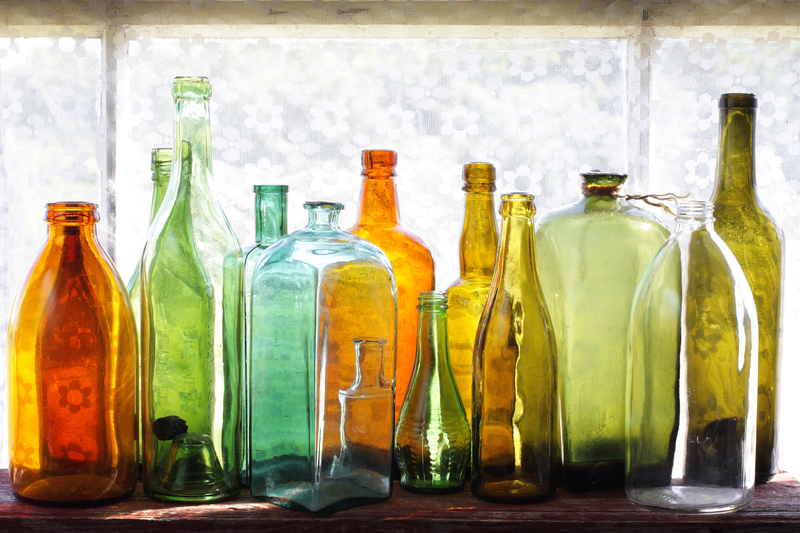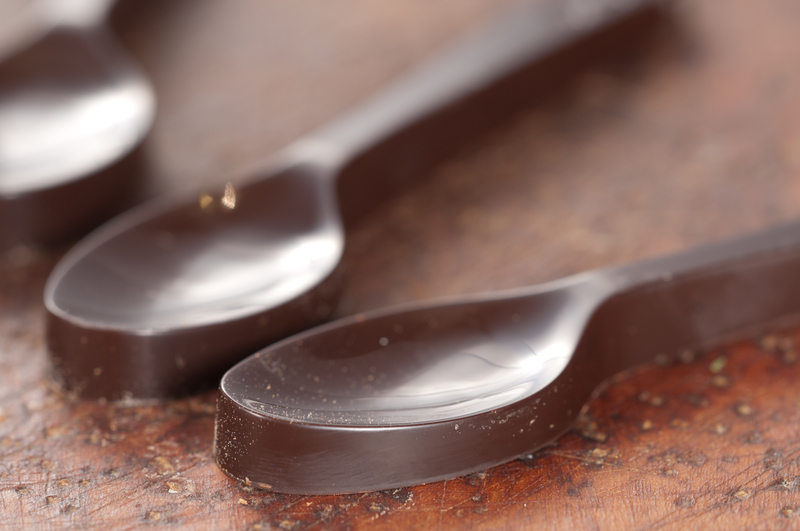Embracing Sustainability in Pots and Pans Recycling
In an age when sustainability is becoming a necessity rather than a trend, the conversation about recycling has extended beyond paper, plastic, and glass. Pots and pans recycling--a niche but crucial aspect of sustainable living--deserves a spotlight. By understanding the benefits, methods, and creative alternatives for recycling old cookware, we can significantly reduce our carbon footprint and contribute to environmental preservation. In this comprehensive guide, we will explore everything you need to know about embracing sustainability in pots and pans recycling.

Why Pots and Pans Recycling Matters
The kitchen is often called the heart of a home, but it can also be a hub for waste if we are not careful. Every year, countless old pots and pans are discarded due to wear and tear, nonstick coating breakdown, or simply becoming outdated. Unlike much household waste, cookware is typically made from recyclable metals such as aluminum, stainless steel, and copper.
The environmental impact of improperly disposing of cookware is significant. When pots and pans end up in landfills, their degradation takes hundreds of years, causing soil and water pollution. By responsibly recycling cookware, we help:
- Reduce landfill waste
- Conserve valuable natural resources
- Minimize energy consumption associated with producing new metals
- Cut down emissions of harmful greenhouse gases
Recycling old pots and pans is one of the simplest ways to practice a sustainable lifestyle at home.
Types of Pots and Pans You Can Recycle
Most cookware is designed for durability, using materials that stand up to heat and time. Fortunately, these same materials are prized in the recycling industry. The most common types of recyclable cookware include:
- Aluminum pots and pans
- Stainless steel cookware
- Copper pots
- Cast iron skillets and pans
It's essential to note that not all cookware is recyclable in the same way. Nonstick coatings like Teflon, as well as handles made from plastic or wood, can present challenges and should be addressed before recycling.
Can Nonstick Pans Be Recycled?
Nonstick pans--especially those with Teflon coatings--are more complex for recycling because of the chemical layer. Some recycling facilities are equipped to handle nonstick cookware, but many are not. Always check with your local recycling provider before including nonstick pans in your recycling bin.
How to Prepare Old Cookware for Recycling
Recycling kitchen pots and pans is not as simple as tossing them in the nearest blue bin. Proper preparation ensures the process runs smoothly and prevents difficulties at the recycling plant.
-
Remove Handles and Accessories:
- Detach any plastic, rubber, or wooden handles if possible.
- Take off lids, which may be made from mixed materials (such as glass).
-
Clean the Cookware Thoroughly:
- Wipe away grease residues or leftover food.
- Rinse out thoroughly to prevent contamination at the recycling facility.
-
Separate Cookware by Metal Type:
- Group aluminum, stainless steel, and copper separately if large quantities are being taken to a scrapyard.
By following these steps, you ensure that your old pots and pans recycling process is efficient and eco-friendly.
Where and How to Recycle Pots and Pans
Depending on your location, there may be several avenues for pot and pan recycling:
1. Local Recycling Centers
Many municipal recycling centers accept metal cookware. Before dropping off your items, check with staff to confirm they can handle the specific materials of your pots and pans. For nonstick-coated pans, inquire about separate guidelines.
2. Scrap Metal Yards
Scrap yards are often the best places to recycle kitchenware made from metal. Here, items are sorted, weighed, and exchanged for cash compensation. Make sure to separate types of metals for easier processing.
3. Manufacturer Take-Back Programs
Some brands like Calphalon and Le Creuset run cookware recycling initiatives. Customers can send back old products, and some companies offer discounts on new items in return. Always check for such programs when upgrading your cookware.
4. Charity Shops and Thrift Stores
If your pots and pans are still usable, consider donating them to charity shops or shelters. Reusing before recycling maximizes sustainability and benefits your community.
Creative Upcycling Alternatives for Old Pots and Pans
Upcycling is a unique way to give cookware a second life and reduce environmental impact. Instead of discarding, think creatively:
- Turn a large pot into a garden planter.
- Use shallow frying pans as quirky wall decor or mirrors.
- Repurpose saucepans as storage bins for art supplies, tools, or kids' toys.
- Create bird feeders using old skillets or pots.
- Make wind chimes from lids or pan bases.
Old cookware upcycling is a fun family project while minimizing landfill waste!
The Benefits of Recycling Pots and Pans
Environmental Impact
The primary advantage of recycling old cookware is the positive effect on the environment. Mining new materials and producing metals consume vast amounts of energy and water. By recycling, we conserve these resources and lower overall greenhouse gas emissions.
Reduction of Landfill Waste
Home goods like cookware are durable and often non-biodegradable. By committing to sustainable pot and pan disposal, we divert substantial waste from landfills each year.
Economic Value
Recycling metals from pots and pans can yield monetary benefits, especially at scrap yards. Additionally, manufacturers cut costs when they use recycled materials instead of new raw metals.
Community Support
Donation and upcycling efforts help those in need while fostering a culture of reuse and sharing, reaching beyond environmental advantages and into community well-being.
Common Challenges and How to Overcome Them
- Nonstick Coating Disposal: Many nonstick coatings contain chemicals that are not widely accepted in regular recycling programs. Search for specialized facilities or contact manufacturers for return programs.
- Uninformed Local Services: If your local waste management is unfamiliar with cookware recycling, educate them or encourage local scrap yards to accept these materials.
- Mixed Material Cookware: Carefully disassemble pots and pans into their metal, plastic, glass, and rubber components for effective recycling.
Frequently Asked Questions about Pots and Pans Recycling
Can I just put my old pots and pans in my curbside recycling bin?
Most household recycling programs do not accept cookware. These items should be taken to a recycling center or scrap yard specializing in metal. Always check with local guidelines.
What happens to recycled pots and pans?
Recycled metals are melted and processed into new materials, which are then used to craft everything from new cookware to car parts and construction materials.
Are there eco-friendly pots and pans I can purchase in the future?
Absolutely! Look for brands focused on sustainable kitchenware. These companies often use recycled materials, environmentally friendly coatings, and offer take-back or recycling programs.
Tips for Embracing a More Sustainable Kitchen
- Purchase durable cookware with long warranties to minimize replacement waste
- Choose recyclable or biodegradable alternatives when upgrading your kitchenware
- Participate in manufacturer take-back programs whenever possible
- Learn about local recycling options and educate family members on proper pot and pan disposal
- Repurpose, donate, or upcycle before considering recycling as a last step

The Future of Kitchenware Recycling and Sustainability
As consumer demand for sustainable products grows, the kitchenware industry is responding with eco-friendly innovations. Expect to see advances in:
- Cookware made from recycled metals and sustainable materials
- Wider availability of nonstick coatings that are biodegradable or easily recyclable
- Expanded manufacturer-run recycling initiatives
- Education programs about responsible kitchenware recycling
The trend of sustainability in the home is only accelerating, especially among younger generations. The more we prioritize pots and pans recycling, the bigger our collective impact on the planet will be.
Conclusion: Start Embracing Sustainability with Pots and Pans Recycling Today
Embracing sustainability in pots and pans recycling is an actionable, impactful way to protect our environment and conserve resources. Whether you are replacing a rusted skillet or decluttering your kitchen drawers, always remember that every pot or pan given a new life--through recycling, upcycling, or donation--reduces landfill waste and lessens the demand on our planet's finite resources.
Make it a habit to research eco-friendly cookware options, support brands with strong environmental ethics, and educate your household about the importance of proper cookware disposal. With a few mindful steps, you can be a kitchen sustainability champion and inspire others to follow suit.
For a cleaner, greener tomorrow, let's all start embracing sustainability in pots and pans recycling today.